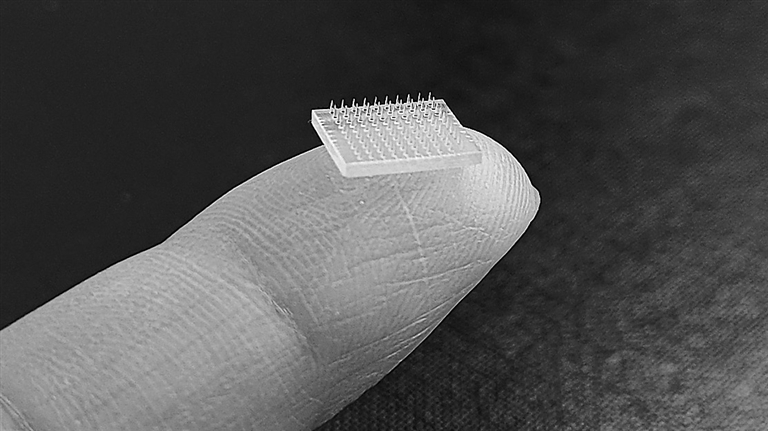
SCIENTISTS at University of North Carolina (UNC) at Chapel Hill and Stanford University in the United States have created a 3D-printed vaccine patch that provides greater protection than a typical vaccine shot. The trick is applying the vaccine patch directly to the skin, which is full of immune cells that vaccines target. The resulting immune response from the vaccine patch was 10 times greater than a vaccine delivered into an arm muscle with a needle jab, according to a study conducted in animals and published by the team of scientists in the Proceedings of the National Academy of Sciences. Considered a breakthrough are the 3D-printed micro-needles lined up on a polymer patch and barely long enough to reach the skin to deliver vaccine. “In developing this technology, we hope to set the foundation for even more rapid global development of vaccines, at lower doses, in a pain- and anxiety-free manner,” said lead study author Joseph M. DeSimone. He is an entrepreneur in 3D-print technology, a professor of translational medicine and chemical engineering at Stanford University and a recipient of the GAA’s Faculty Service Award in 2017. The ease and effectiveness of a vaccine patch sets the course for a new way to deliver vaccines that are painless, less invasive than a shot with a needle and can be self-administered. Study results show the vaccine patch generated a significant T-cell and antigen-specific antibody response that was 50 times greater than a subcutaneous injection. That heightened immune response could lead to dose sparing, with a micro-needle vaccine patch using a smaller dose to generate a similar immune response as a vaccine delivered with a needle and syringe. While micro-needle patches have been studied for decades, the work by Carolina and Stanford overcomes some past challenges: Through 3D printing, the micro-needles can be easily customized to develop various vaccine patches for flu, measles, hepatitis or COVID-19 vaccines. The COVID-19 pandemic has been a stark reminder of the difference made with timely vaccination. But getting a vaccine typically requires a visit to a clinic or hospital. There a healthcare provider obtains a vaccine from a refrigerator or freezer, fills a syringe with the liquid vaccine formulation and injects it into the arm. Although this process seems simple, there are issues that can hinder mass vaccination — from cold storage of vaccines to needing trained professionals who can give the shots. Meanwhile, vaccine patches, which incorporate vaccine-coated micro-needles that dissolve into the skin, could be shipped anywhere in the world without special handling, and people can apply the patch themselves. Moreover, the ease of using a vaccine patch may lead to higher vaccination rates. It’s generally a challenge to adapt micro-needles to different vaccine types, said lead study author Shaomin Tian, a researcher in the department of microbiology and immunology in UNC’s School of Medicine. “These issues, coupled with manufacturing challenges, have arguably held back the field of micro-needles for vaccine delivery,” she said. Most micro-needle vaccines are fabricated with master templates to make molds. However, the molding of micro-needles is not very versatile, and drawbacks include reduced needle sharpness during replication. “Our approach allows us to directly 3D-print the micro-needles, which gives us lots of design latitude for making the best micro-needles from a performance and cost point-of-view,” Tian said. The micro-needle patches were 3D-printed at Carolina using a CLIP prototype 3D printer that DeSimone invented and is produced by CARBON, a Silicon Valley company he co-founded. The team of microbiologists and chemical engineers continues to innovate by formulating RNA vaccines, like the Pfizer and Moderna COVID-19 vaccines, into micro-needle patches for future testing. “One of the biggest lessons we’ve learned during the pandemic is that innovation in science and technology can make or break a global response,” DeSimone said. “Thankfully we have biotech and healthcare workers pushing the envelope for us all.” (SD-Agencies) | 
